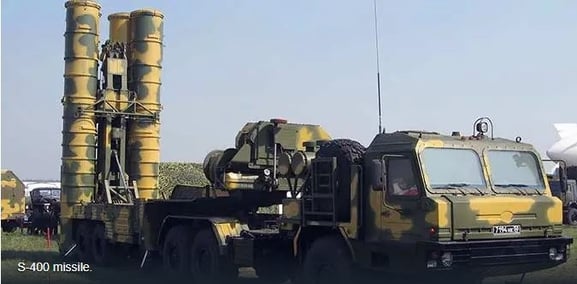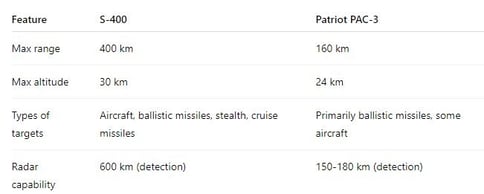

The domain of modern warfare has fundamentally transformed with the advent of increasingly sophisticated aerial threats – from hypersonic missiles to stealth aircraft. In this dynamic environment, advanced air defence systems act as the cornerstone of national security. Among the most formidable of these is Russia’s S-400 Triumf system. For India, the acquisition of the S-400 represents a strategic leap in its defensive capabilities, altering the security calculus not only vis-à-vis Pakistan and China but also on a broader Indo-Pacific scale.
Development History of the S-400
The S-400 Triumf (NATO designation: SA-21 Growler) is the product of decades of Russian expertise in layered air defence. Developed by Almaz-Antey for the Russian Armed Forces, it is an evolution of the earlier S-300 family, aimed at countering not just aircraft, but also cruise missiles, ballistic missiles, and even stealth threats.
Development Timeline:
Early concept work: late 1980s (as the S-300PMU-3).
First successful tests: 1999.
Official induction into Russian service: 2007.
The S-400 reflects the Russian doctrine of creating deep, integrated, and multi-layered air defence networks capable of denying enemy air superiority in both tactical and strategic operations.
Technical Specifications and Capabilities
The S-400’s design philosophy is centered on multi-target, multi-layer, and multi-missile engagement capability. Some of its standout technical features include:
Specification Details
Maximum range: 400 km (for specific missile types)
Detection range: 600 km (large aerial targets)
Engagement altitude: 10 meters to 30 kilometers
Missile speed: Up to Mach 14 (approx. 17,000 km/h)
Targets tracked simultaneously: 100+
Targets engaged simultaneously: 36
Missile Types
The S-400 uses a mix of four different missiles tailored to different engagement envelopes:
40N6E: Long-range missile (400 km) – capable of targeting AWACS, stand-off jammers.
48N6: Medium-to-long-range missile (250 km).
9M96E2: Medium-range missile (120 km).
9M96E: Short-to-medium range missile (40 km).
Each missile type has a 'lock-on-after-launch' capability, enabling flexible responses to complex air threats.
Radar Systems
The S-400’s detection and fire-control radar suite is among its strongest features:
91N6E Big Bird: Long-range acquisition radar.
92N6E Grave Stone: Engagement radar.
96L6E Cheese Board: Altitude determination radar.
40V6M mast systems: Elevates radars for improved line-of-sight in complex terrain.
These radars are designed to detect stealth aircraft, cruise missiles flying at low altitudes, ballistic missiles, and even hypersonic threats.
S-400 Acquisition by India
India signed a $5.43 billion contract with Russia in October 2018 for five S-400 regiments, despite the threat of U.S. CAATSA sanctions (Countering America's Adversaries Through Sanctions Act).
Deliveries: Began late 2021; currently, several units are operational.
Deployment: Deployed strategically to cover threats from Pakistan and China; particularly guarding the northern borders, Ladakh sector, Punjab plains, and critical infrastructure areas.
The S-400 offers India a game-changing capability against China’s fifth-generation aircraft like the J-20, and Pakistan’s expanding missile arsenal.
Significance for Indian Military and Defence Posture
The S-400 holds strategic, operational, and political significance for India:
Strategic Significance
Deterrence: Provides a credible shield against first-strike air campaigns.
Force Multiplier: Strengthens India's "Anti-Access/Area Denial" (A2/AD) capabilities.
Credible Threat Against Stealth Assets: Potentially neutralizes adversaries' expensive stealth aircraft investments.
Operational Benefits
Layered Air Defence: Integrates with indigenous systems like Akash, SPYDER, and upcoming AAD/PAD interceptors.
Wide Area Defence: A single S-400 battalion can cover entire metropolitan cities or key military hubs.
Political Messaging
Strategic Autonomy: India's acquisition of the S-400, despite U.S. pressure, demonstrates an independent foreign and defence policy.
Possible Use Scenarios for India
Countering Chinese Air Threats: Deployed across the northern sector, capable of neutralizing Chinese aircraft, drones, and missiles entering Indian airspace.
Defending Against Pakistani Strikes: Protects vital command-and-control centers, nuclear installations, and military bases from Pakistani aerial assets.
Neutralising Standoff Threats: Targeting enemy AWACS, tanker aircraft, and electronic warfare platforms flying deep inside their own airspace.
Crisis Stability Tool: In situations like Doklam or Galwan-type standoffs, S-400 enhances India’s air superiority and pressure tactics without offensive escalation.
Global Comparison: S-400 vs. Other Air Defence Systems
1. Patriot PAC-3 (USA)
The S-400 outranges the PAC-3 significantly and can engage a wider variety of threats. However, the PAC-3 has seen more extensive combat use and enjoys better interoperability within NATO structures.
2. THAAD (USA)
THAAD is designed specifically for high-altitude ballistic missile defence (>150 km) and complements systems like PAC-3. It cannot engage aircraft or low-flying cruise missiles effectively – a gap S-400 addresses.
3. David’s Sling (Israel)
Israel’s David’s Sling is part of the broader Iron Dome architecture, optimized for medium-range missile defence. While technologically advanced (especially in sensor fusion), its focus is narrower than S-400’s broad-spectrum threat engagement.
4. HQ-9 (China)
The HQ-9 is China's attempt at replicating the S-300/S-400 lineage but reportedly lags behind in radar quality, missile range, and ability to counter stealth threats. Indian analysts view the HQ-9 as inferior to the S-400.
Limitations and Challenges
Despite its strengths, the S-400 is not invulnerable:
Overwhelming by Saturation: Like all static air defence systems, S-400 can be overwhelmed if attacked by a saturation wave of missiles and drones.
Electronic Warfare Vulnerability: Jamming and cyber operations could reduce its effectiveness, especially if its radar or command links are compromised.
Interoperability with Western Systems: Integrating the S-400 with U.S.-origin systems like C-17, C-130J, and P-8I platforms remains a technical and operational challenge for India.
Conclusion: The Future of India's Air Defence
The acquisition of the S-400 marks a historic enhancement of India’s air defence shield. It creates a potent deterrent layer against both traditional and emerging aerial threats, placing India among a small group of nations with the ability to deny airspace access to peer adversaries.
As India moves forward, it must complement the S-400 with indigenous programs like the XRSAM project (Extended Range Surface-to-Air Missile) and hypersonic interceptor development to create a self-reliant, multi-tiered, and future-ready air defence ecosystem.
The S-400 today serves as a powerful symbol of India’s strategic assertiveness, of Russia’s continued relevance in global defence exports, and of a changing balance in Asian military power.


